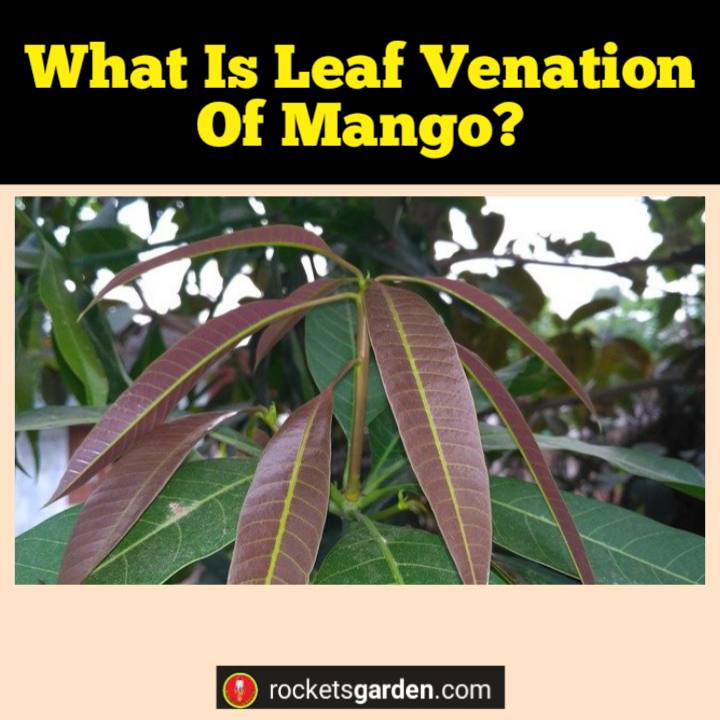
Vegetables, trees, herbs and other plants have its parts that help them to grow well. It functions and work to help the plant grow bigger and stronger. Some of its parts are roots, bark, branches, flowers, fruits and leaves. Those parts have their own characteristics. Just like the leaves of mango tree which is a little bit long and have a pointed tips. But what is leaf venation of mango?
The venation is a pattern of the veins in the blade of a leaf. It consist of many tissues that help to transport its food and water. There are many kinds of plants, trees, vegetables, etc. and they have their own distinctive leaves pattern.
What is Leaf Venation of Mango?
The leaf venation of mango is called pinnate reticulate. The pinnate reticulate is a pattern on the leaves in which the arrangement of the veins is irregular. It is the characteristic of mango leaves where the veins are not parallel. When you look at the leaves closely you can see the leaves appearance. The sunlight or even using a flashlight will help to see the veins clearly.
The leaves of mango have a central midrib. The midrib is a little bit bigger and thicker compare to veins. Also it have a swarm of small veins that emanates from the midrib and spread throughout the leaf. The veins are commonly small but it helps for making food especially during photosynthesis and it helps to transport the water and foods.
The pennate reticulate is what the mango leaves have. Some example of leaves with pennate reticulate venation can also be seen on Hibiscus, Coriander, Papaya, Guava, Custard Apple and others. The irregular pattern of veins is great to see on the leaves. Sometimes the venation of the leaves is not familiar to the grower because they don’t observe them well and they are just great seeing the trees growing well and making lots of fruit.
Does Mango Have Parallel Venation?
No, mango doesn’t have a parallel venation rather have pinnate reticulate. The parallel venation is a pattern on the leaves where the veins are parallel to each other. If you try to observe the mango leaf, the veins are not parallel and they are irregular. This is a characteristic of the mango leaf and its important to transfer water and foods.
The parallel venation is commonly found on most monocot leaves. The veins are also small and have a little bit big midrib. The veins are connected to the midrib and the midrib is connected to the stem by the petiole. Some plants with parallel venation helps the plant to grow and thrive well. Its easy to see the veins with parallel venation but is also clearly with the use of sunlight or flashlight.
Some example of leaves that have parallel venation are; banana, grass, wheat, rice, maize, lily, barley, sugarcane and grains. They have this own characteristic of their leaves. Its great to observe whether your plant have parallel venation or pinnate reticulate.
Which Type Of Leaf Is Mango Leaf?
The type of mango leaf is simple alternate lanceolate. They grow around 12 to 16 inches (30.1 to 40.6 cm) long. They are color yellow-green to purple in color when young and changes to light to dark green as grow older. Eventually changes to color yellow when old and then it becomes brown and drop from the tree. The leaf helps the mango tree to create its food.
The lanceolate leaf is a type of leaf where it shape is like a lance head. Its a simple type of leaves and mango belongs to them. The mango leaf type is a simple one and it has a good shape. The tree grows many leaves and it makes a good shade under the tree.
What Is The Characteristics Of Mango Leaves?
The mango leaves characteristics are color yello-green to purple when young and light to dark green when older, long around 12 to 16 inches in length, has a leathery texture, either elliptical or lanceolate and has a great fragrant smell.
The mango leaves is very important to the tree because it works to make foods. When the sun hits the leaves, it is being process in the photosynthesis and becomes sugar what the tree consume. Looking at the leaves, you will see the leaf venation of mango. The veins of the leaf helps to transport nutrients.
Knowing what is leaf venation of mango is a great thing. Some growers or people might don’t know it but still its good idea to be familiar with the tree. There is no problem whether you know or not and it doesn’t affect the tree growth.
Those are some informations about what is leaf venation of mango. The leaf venation of mango is called pinnate reticulate. It has irregular patterns of veins on its leaf and has a midrib. It is connected to branches with the petiole.
